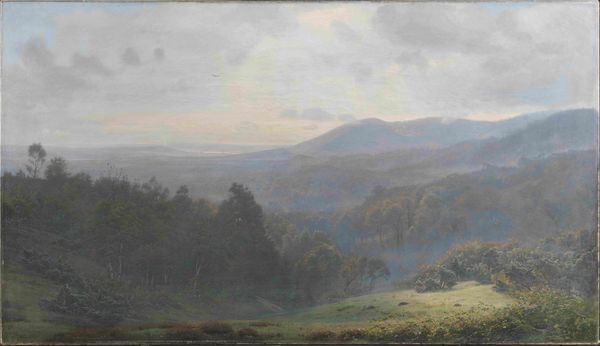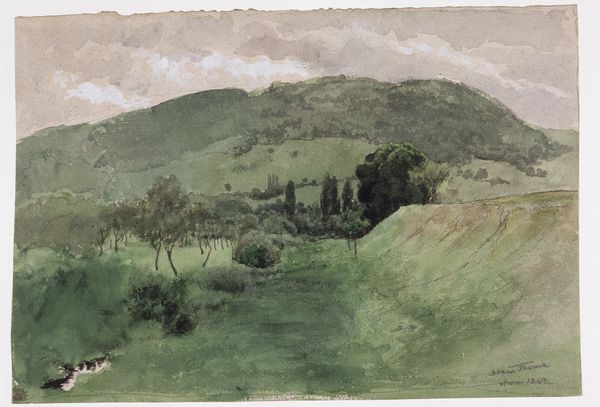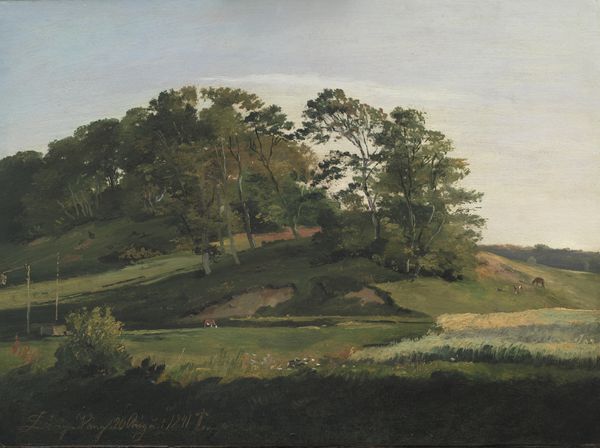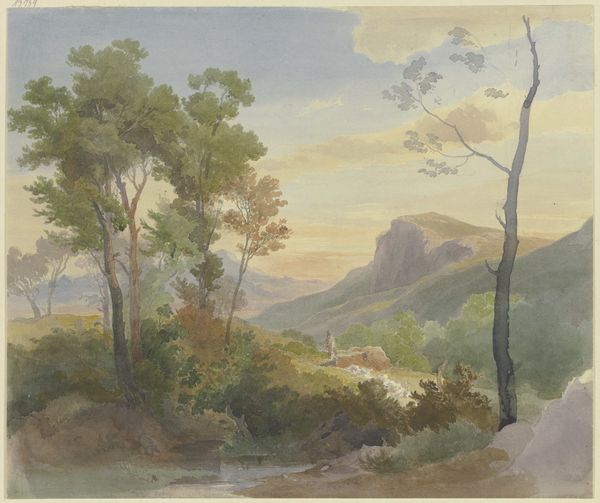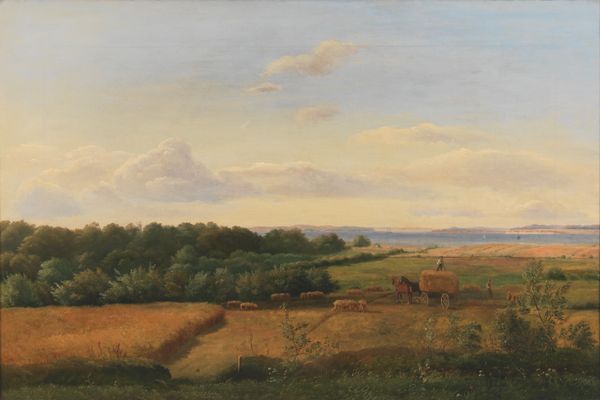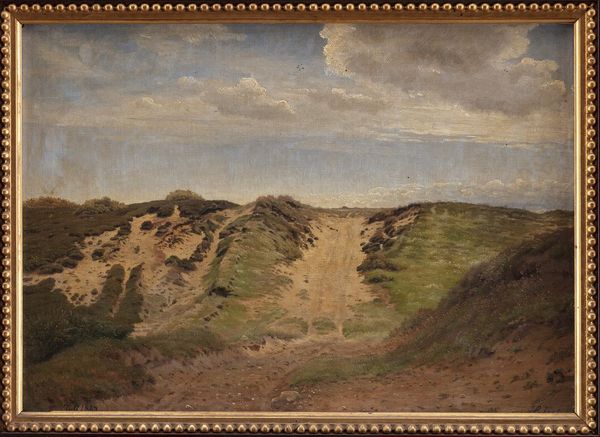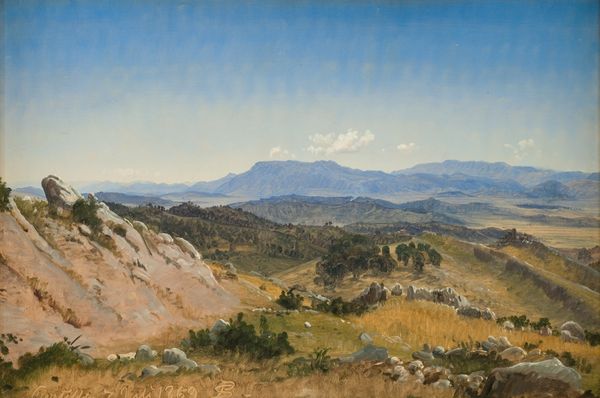
tempera, painting, plein-air, watercolor
#
tempera
#
painting
#
plein-air
#
landscape
#
classical-realism
#
watercolor
#
romanticism
#
watercolour illustration
#
watercolor
Dimensions: 7 x 12 1/2 in. (17.8 x 31.8 cm)
Copyright: Public Domain
Editor: This watercolor and tempera landscape is titled "Mountainous Landscape at Tivoli," created by Simon Denis between 1786 and 1797. It evokes a serene but almost faded memory. The artist uses these subdued colours to paint the sloping hills. What can you tell me about the materiality of this work? Curator: Considering Denis’s choice of watercolor and tempera, particularly for an open-air (plein-air) landscape, we can think about the practicalities and the social values connected with it. Watercolor, being portable and relatively inexpensive, made landscape painting accessible. It challenges traditional art hierarchies. Think about how the means of production—the accessibility of these materials—allowed for a different relationship with nature and art-making outside the established studio system. Do you see a tension there between the elite art world and the accessible nature of watercolor? Editor: Definitely. Using readily available materials, like watercolor, suggests a move away from commissioned artwork in the traditional academic setting. Were artists at the time aware of this shifting perspective? Curator: Absolutely. Artists consciously engaged with the democratizing potential of these materials and the sites and modes of production of these works. Denis isn't just depicting a landscape, he’s participating in a broader dialogue about artistic labor and access to both the means and locations of artistic practice. Considering it was painted outside the traditional studio space, where do you think the paper would have come from? And how did the ready availability of painting materials inform landscape painting’s boom during the 18th Century? Editor: That’s really fascinating. I had focused more on the artistic skill than the accessibility of the work and its role in transforming how art was made and consumed at the time. Thanks for broadening my perspective! Curator: My pleasure! Reflecting on art this way illuminates not only the artist’s choices, but also how social and economic factors influence art’s development and place in history.
Comments
No comments
Be the first to comment and join the conversation on the ultimate creative platform.




